Perennial mallow: varieties, planting and care

Mallow cannot be called a particularly popular plant for a cottage or summer cottage. But at the same time, both experienced and novice gardeners agree that a flower garden with this plant can look the most spectacular and attractive. He attracts attention, acting in various qualities in landscape design, and over the centuries has acquired his own connoisseurs. Garden mallow is planted by both owners of small plots and residents of elite country houses.

Description of the plant
The shrub is herbaceous and represents the Malvaceae family. Mallow is erect and tall. Its height depends on the variety and age and averages from 60 to 250 centimeters. The leaves are rounded and have notches at the edges. They can be of various sizes, which depends on the location. At the bottom, the leaves are much larger, and as they rise, they become smaller and smaller.


As for the flowers, their shape resembles a funnel. The buds are grouped into inflorescences, which are located at the top, more than 100 cm in height. They are quite large, 6 to 12 centimeters in diameter. They are not only ordinary, but also semi-double and terry. The color can be any, white, pink, yellow and red shades are popular. The flowering of the plant begins in June and ends in September. Accordingly, all summer long it is able to delight others with an attractive appearance. Gardeners should take into account that after the mallow has faded, fruits are formed on it.


They are a ring that unites a large number of separate lobules, which are separated during the ripening process.
Varieties
The history of mallow goes back almost a thousand years. During this time, many species and varieties have appeared. Let's consider the most popular ones.

Sudanese
The second name of the Sudanese mallow is "hibiscus". This biennial can be considered both a tree plant and a shrub. It is quite high, this figure can reach 3 meters. The plant has rather large flowers, the diameter of which is about 8-10 centimeters. And connoisseurs can prepare delicious and healthy drinks from the fruit. Physicians also speak about the beneficial properties of hibiscus. The fact is that its infusions and decoctions can be used in treatment. Sudanese mallow is an excellent anti-inflammatory, diuretic and expectorant of plant origin.

Wrinkled
Gardeners also call wrinkled mallow stockrose. There are several varieties of it, which are quite popular in the plots. The plant can be either tall or dwarf. Stockroses are often used for design purposes, as they give the territory an original and striking appearance. Wrinkled mallow can rise up to 2 meters in height. It is decorated with flowers of small size, which are both simple and double, as well as semi-double. Among the varieties, the most famous are "Chater's Double Stripe", which has neat double flowers, the shade of which can be different, "Single Mix", which looks like hibiscus, as well as "Team".
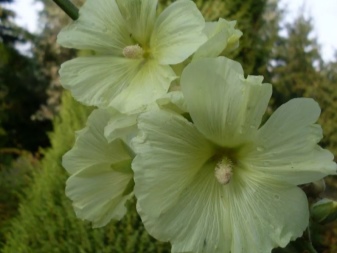

The last variety grows to only 80 centimeters and is dwarf. Its flowers can have a variety of colors.
Musky
The musk mallow is rather small.Its height can reach a maximum of 100 centimeters. This bush species is distinguished by delicate flowers with a diameter of no more than 5 centimeters, which have light colors and smell amazing. Let's take a closer look at the most famous varieties.
- "White perfection" is a dwarf flower. Its height is no more than 60 centimeters. The branches are covered with snow-white buds, due to which the plant looks very delicate.

- "White Tower" is slightly higher, up to 70 centimeters. According to the name, the flowers of this variety are also white in color. They make stunning bouquets with a delicate and very pleasant aroma. They look great in flower beds too.


- "Pink Tower" the same can reach a height of 70-100 centimeters. The plant is decorated with pink flowers. It looks very good next to white buds.


Hybrid
The hybrid species has a rather impressive height, up to 2 meters. The bush is decorated with pinkish and white buds. Some of the more famous varieties include Powder Puffs and Gibbortello.
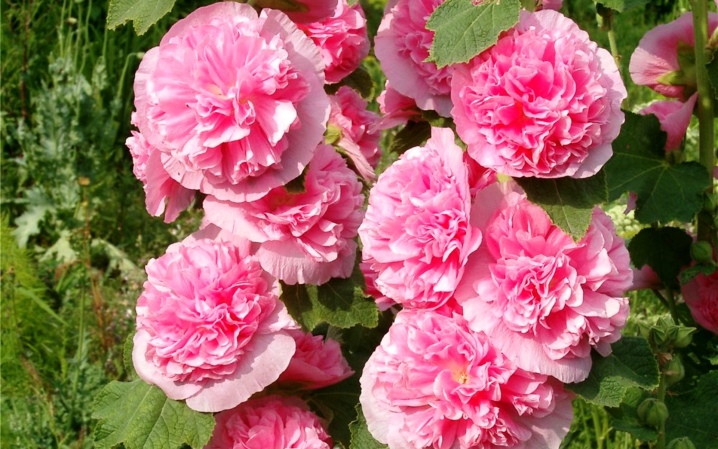
Lesnaya
Forest mallow can reach heights of over a meter. It has peculiar flowers. Each bud is distinguished by veins of an almost black shade. HThe most famous variety is Black Pearl. It has rather large buds, up to 7 centimeters. Their color is red-violet, and the veins are much darker, almost black. The Zebrina variety is distinguished by its large pink flowers. The petals are decorated with oblong red stripes.


How to plant?
It must be said that mallow is not particularly demanding of care. However, there are general guidelines that must be followed in order for the plant to feel as comfortable as possible. The choice of location and soil plays an important role.
- Mallow will grow well in the shade, but you should still give preference to well-lit areas. Lack of sun can lead to the fact that the flowering will be less abundant, respectively, the plant will not be able to reveal all its attractiveness.


- Before planting mallow, it is worth choosing an area that will be protected from gusts of wind. The fact is that a tall plant can break under their influence. This applies primarily to very delicate petals, since the flowers are located on top.
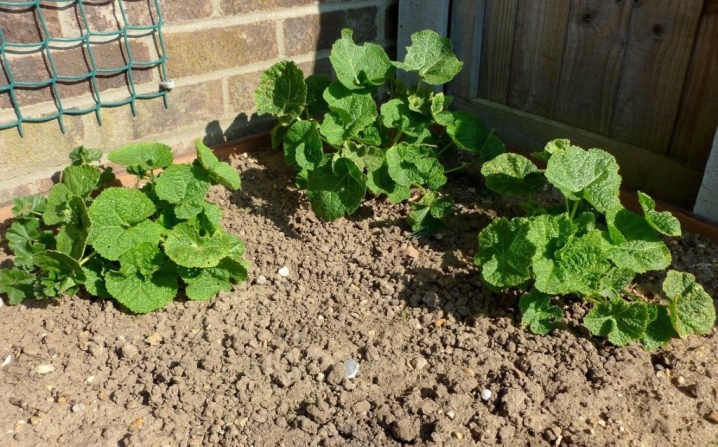
- The planting site should be chosen deliberately, since the transplant will not benefit the plant. The root system is branched and easily damaged when the flower is moved to a new site. Therefore, the place must become permanent.


- As for the soil, preference should be given to light, which will allow moisture and air to pass through as much as possible. Mallow in this case will feel very good. If the soil is impoverished, you will need to fertilize it regularly, thereby providing the plants with nutrients. The wrinkled species will like loamy soil, consisting of clay and sand. It is imperative to think about a drainage system, its provision will prevent root closure.

Next, you need to talk about the planting process. First of all, the seeds are planted, then the turn of the seedlings comes. Seeds can be planted in two ways. The procedure is carried out after a warm temperature is reached, around April and early May. Seeds are sown in a greenhouse, and at the end of summer they are placed in open ground. If the planting is carried out in May or June, the soil is used immediately, after which the place is covered with a film in case of unexpected cold snaps. In this case, the plant will bloom only in the next season, since the summer period will be spent on building up green mass.


To achieve flowering in the same year, you should use the first method, when you first need to get seedlings that are already planted in open ground. The procedure is performed when the ground warms up to +10 degrees. Prepare for landing in advance.Fertilizers begin to be applied to the soil a year before the procedure. In the fall, it is best to use a phosphorus-potassium supplement, in the spring, with a nitrogen content. It will be easier for the seeds to germinate if the grower softens the shell first. This can be done by placing them in warm water for 10-12 hours, the temperature of which should be about +45 degrees. It must be said that seeds germinate best at 3 years of age.


The first step is to prepare the holes. Their depth should be about 3 centimeters. 3-5 seeds are placed in each hole, covered with soil mixture and carefully watered. Experts recommend using peat pots as containers, which after the procedure are stored at a temperature of about +20 degrees. Seedlings appear in 10-14 days. As soon as 3 leaves appear on each of the seedlings, they are thinned out. The distance from each other should be at least 3 centimeters. Separate containers can be used.

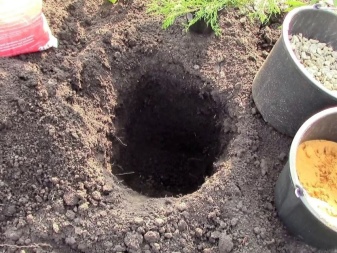
The grown seedlings must be hardened. This is done as follows. Already in the spring, the pots are taken out into the street for several hours. In May and June, you can start planting seedlings in open ground. Depending on the variety, the distance between seedlings ranges from 25 to 50 centimeters.
How to take care of it properly?
It is not so difficult to grow mallow on the site. The plant needs minimal care, which allows even novice gardeners to plant a crop. A limited set of activities is required, such as watering, loosening, feeding and garter. Let's talk about the intricacies in more detail.
- When it comes to watering, moderation is a guarantee of the plant's well-being. If we talk about the middle zone of our country, 1-2 waterings per week are enough. In the south, or in dry and hot weather, the number of procedures should be added, increasing to 1 time in 2 days, and also adding the amount of water. The same should be done when it comes to budding stockrose. At this moment, the flower especially needs moisture, but the main thing is not to overdo it, so that it does not stagnate in the soil.


- The systematic loosening of the soil plays an important role. With its help, you can provide air access to the root system. In addition, the procedure helps to control weeds. The main condition is maximum accuracy, since in some cases, damage to the roots can lead to the fact that the plant will simply die.


- Top dressing is a must. It is brought in annually. The flower benefits from organic matter, for example, peat or humus. 1 square meter requires about 3 kilograms of fertilizer. In addition, peat or compost is great for mulch. In the spring, before the buds appear, special mineral complexes should be added to the soil.


- Some mallow varieties are of considerable height. This means they may need a garter. It will give the plant additional resistance, which becomes especially important in adverse weather conditions. Ordinary pegs can be used as support.


- Also, don't forget about pruning. She will be able to prolong flowering. For this, damaged and dry elements must be removed in a timely manner.

Reproduction methods
Mallow propagates in three ways. You can use seeds, cuttings and seedlings. Each of them has its own advantages and disadvantages. As for planting in open ground, the procedure is usually carried out at the very beginning of summer. The soil is dug up, seeds are placed in it and sprinkled with a small amount of earth. Shallow furrows can be used. Mallow seeds can also be planted in the fall. However, this will lead to a change in technology. Small holes are prepared at a distance of 40-50 centimeters from each other, depending on what kind of plant you plan to grow. They are sprinkled with peat or loose earth, and then covered with a layer of foliage that will help them survive the winter.

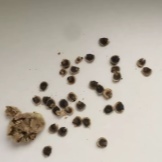


To prepare the seedlings, the seeds can be sown back in March. The mallow will bloom for the first time next season. If a gardener wants to enjoy the beauty of flowers in the same year, you should start planting as early as possible, in addition, you will also need to transfer the seedlings to open ground as early as possible. The sprouts are best placed in cups that are large enough to be comfortable with a branched root system. As a soil mixture, experts recommend using soil for flower planting, which is sold in specialized stores.

Planting technology practically does not differ from working with seeds in the open field. In each glass there are several seeds, which are carefully sprinkled with earth, and then watered. After this, the containers should be removed to a warm place protected from drafts. It is necessary to monitor the level of humidity, watering should be regular.
To see a specific variety of perennial mallow on the site, it is best to use propagation by cuttings. The procedure can be carried out both in the spring and in the summer. In the first case, the cutting is cut closer to the root. In summer, it is harvested from the stem of the plant. When a gardener stops to propagate mallow by cuttings, he must take care of the availability of the necessary ingredients. In addition, the elements are disinfected in advance to exclude the appearance of infection.


First of all, you need a sharp, well-sharpened knife. The plant should cut easily and effortlessly. And also containers with a soil mixture are prepared in advance, where the cutting will be placed. The cut of the flower will need to be processed. Chopped charcoal is perfect for this. The procedure itself is quite traditional and does not cause any difficulties. After the stalk of the mallow is cut, the gardener needs to carefully process the cut. When the surface dries up a little, the cutting is placed in a previously prepared container. It should be watered abundantly, it is not forbidden to use formulations that stimulate root growth. It is in this container that the plant will remain until the time comes to transplant it into open ground.

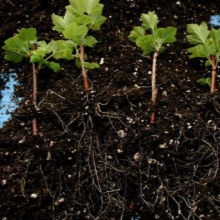

It should be noted that grafting is not a very simple procedure, as some novice flower growers seem to think... For a successful result, experience and certain knowledge are required. Therefore, it is recommended to harvest cuttings in a larger quantity than is necessary for them. The more experienced the gardener, the easier and more successful he is to cope with the task. Planting mallow requires patience and a competent approach to business.


Diseases and pests
It should be noted that most of the mallow is unpretentious, it is not afraid of most diseases and pest attacks. However, troubles can still happen. For example, the plant can get sick with powdery mildew and spotting... The reason for this is excess moisture, for example, during heavy rains. Rust can form if shrubs grow in close proximity to fences or metal supports. Stem cancer and mosaic virus are also dangerous.


The fight against all these diseases must be started in a timely manner. The infected parts of the plant are removed first. After this, the bush should be treated with special preparations. Fito-doctor, Trichodermin and others are perfect. Disease is not the only attack that affects mallow. Pest insects can also give the gardener many unpleasant minutes. The plant is affected by spider mites and aphids. Insecticides will help in the fight, for example, "Fufanol" or "Fitoverm".


Use in landscape design
This plant is highly prized by landscape designers.It looks very attractive due to expressive large colors. Due to the location of the peduncles, it is often used for group plantings, placing it near fences or walls of buildings. They look good when decorating the backgrounds of flower beds, in this case, not so tall flowers can be planted in front.

A good option is to place one or more mallows in the center of the flower bed. Plants are planted around, combining in color and other indicators. Lupines, phloxes, chamomiles, calendula and other simple flowers can be noted among the successful neighbors. Low-growing mallows can be placed in flowerpots. Such plants will look advantageous at the entrance to the house.

For information on how to properly care for perennial mallow, see the next video.







































































































The comment was sent successfully.